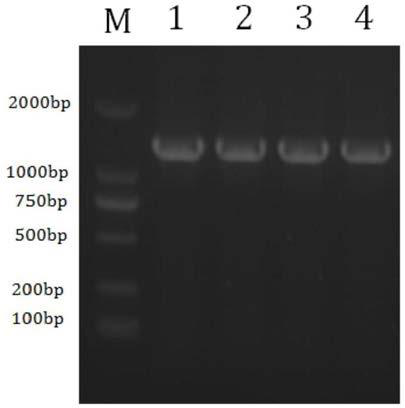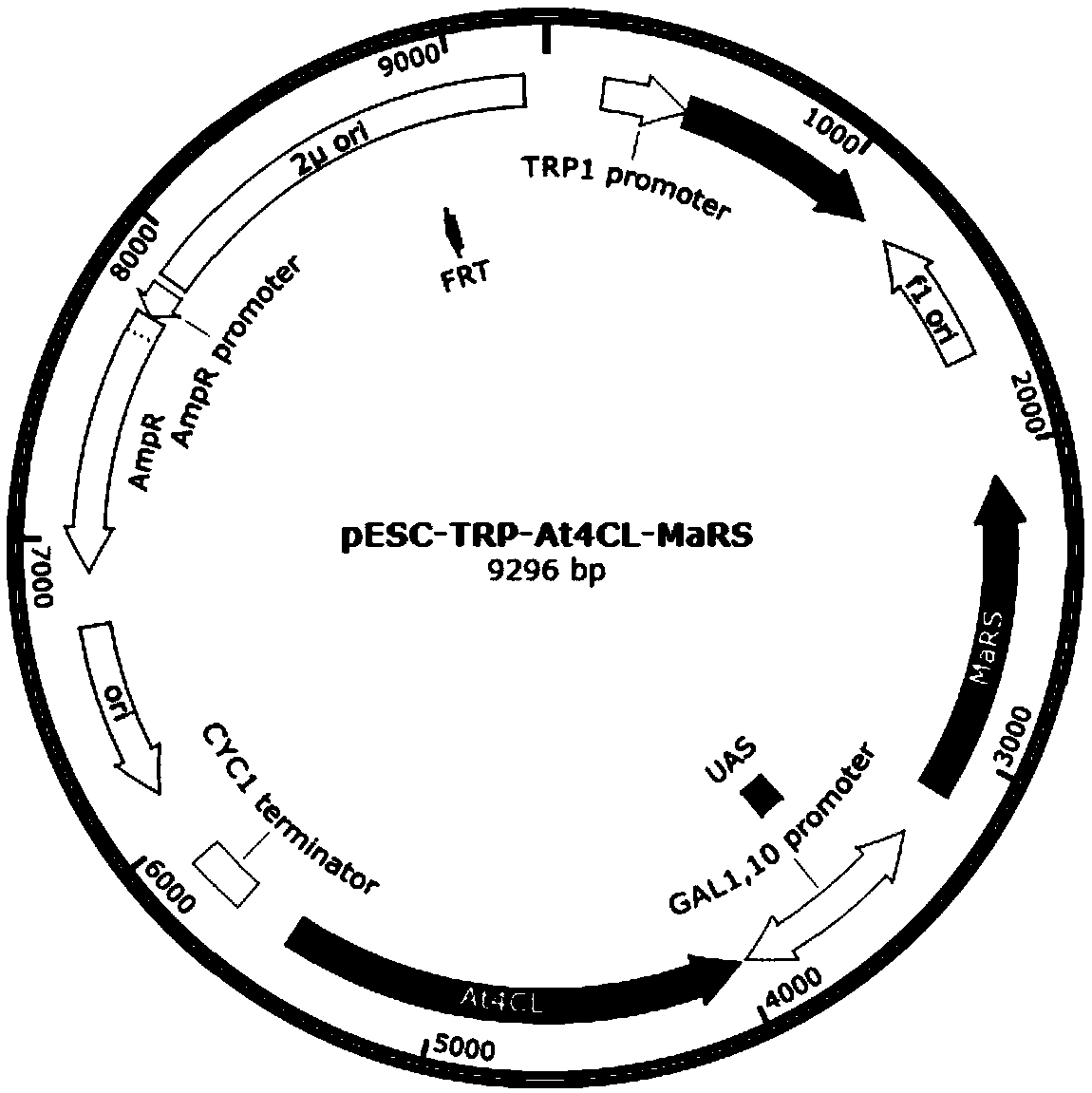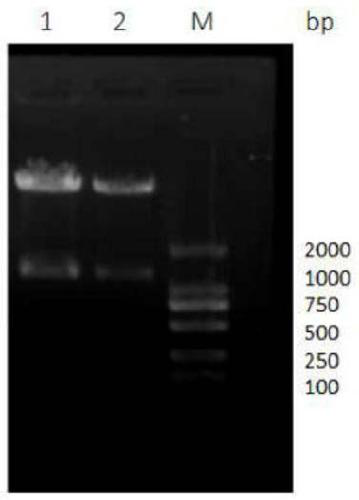Mulberry resveratrol synthase, coding gene thereof, recombinant vector and application thereof
A technology of resveratrol and recombinant vectors, which is applied in the field of cloning and yeast expression vector construction, and can solve the problems of no industrial application, no absolute dominant genes and related patents, and great differences in amino acid sequences
- Summary
- Abstract
- Description
- Claims
- Application Information
AI Technical Summary
Problems solved by technology
Method used
Image
Examples
Embodiment 1
[0035] Embodiment 1 Mulberry mRNA extraction and the preparation of cDNA
[0036] 1) Take 100-200 mg of mulberry tissue and grind it into powder in liquid nitrogen, add 1 mL of Trizol solution, and pay attention that the leaves are always immersed in liquid nitrogen during the grinding process.
[0037] 2) The grinding solution was left at room temperature for 5 minutes, and chloroform was added to the grinding solution according to the volume ratio of Trizol solution and chloroform of 1:5, and vigorously shaken for 20 seconds.
[0038] 3) Static layering, take the upper aqueous phase into a new centrifuge tube, add an equal volume of isopropanol, let stand at room temperature for 10 minutes, and centrifuge at 10,000 rpm for 10 minutes.
[0039] 4) Discard the supernatant, add 70% ethanol according to the volume ratio of Trizol solution and 70% ethanol 1:1.5, vortex and mix well, and centrifuge at 10000rpm for 10min at 4°C.
[0040] 5) Discard the supernatant, dry at room tem...
Embodiment 2
[0043] Cloning of embodiment 2 mulberry MaRS gene
[0044] Design specific amplification upstream primers
[0045] MaRS-1: ATGGCDACMYCCTCCAWGAAA
[0046] and downstream primer MaRS-2: TTAATTAWTGRGAAGGCTTAC
[0047] Carry out PCR amplification resveratrol synthase gene with the cDNA of mulberry tree as template, PCR system and amplification condition are shown in Table 1, obtain the gene fragment of 1176bp ( figure 1), connect the resveratrol synthase gene fragment to the T cloning vector (refer to the Takara vector kit instruction manual) to obtain the ligation product, and then transform it into a competent E. coli DH5α strain, pick a positive clone and send it Sequencing was performed by Shanghai Sangon Biotechnology Co., Ltd., and the sequencing results were compared in NCBI.
[0048] Table 1 PCR system and conditions of mulberry resveratrol synthase gene
[0049]
[0050] PCR reaction program: 94°C, 5min
[0051]
Embodiment 3
[0052] Example 3 Construction process of yeast expression vector pESC-TRP-At4CL
[0053] Design specific amplification upstream primers
[0054] At4CL-1:CGGGATCCATGGCGCCACAAGAACAAGCAGT
[0055] and downstream primer At4CL-2: CCGCTCGAGTCACAATCCATTTGCTAGTTTTG
[0056] Arabidopsis thaliana 4CL gene (4-coumaric acid: Coenzyme A ligase, 4-coumarate: Co-enzyme A ligase; or 4-coumaryl- CoA ligase, 4-coumarate acyl-CoA ligase) (4CL gene can convert p-coumaric acid into one of the catalyzed substrates of resveratrol synthase—4-coumaryl-CoA, and the other substrate is The intracellular malonyl-CoA) PCR system and amplification conditions are shown in Table 2, and a 1686bp gene fragment (At4CL) was obtained, and the At4CL gene fragment was cut and recovered from the gel and connected to the pMD18-T cloning vector (refer to the Takara vector kit Instructions) to obtain the ligation product, and then transform it into a competent E. coli DH5α strain, and extract the plasmid pMD18-T-At4C...
PUM
 Login to View More
Login to View More Abstract
Description
Claims
Application Information
 Login to View More
Login to View More - R&D
- Intellectual Property
- Life Sciences
- Materials
- Tech Scout
- Unparalleled Data Quality
- Higher Quality Content
- 60% Fewer Hallucinations
Browse by: Latest US Patents, China's latest patents, Technical Efficacy Thesaurus, Application Domain, Technology Topic, Popular Technical Reports.
© 2025 PatSnap. All rights reserved.Legal|Privacy policy|Modern Slavery Act Transparency Statement|Sitemap|About US| Contact US: help@patsnap.com



